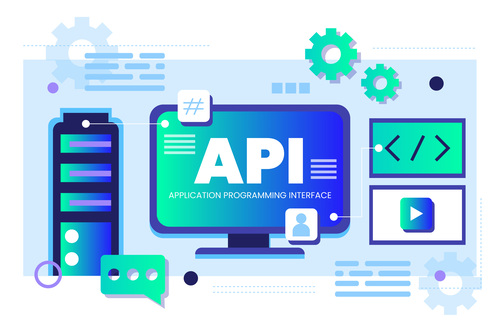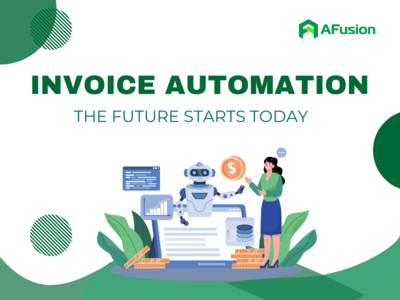Resources > Blog > 16> RPA vs. API: Understanding The Difference
RPA vs. API: Understanding The Difference
In the field of automation, two prominent technologies are Robotic Process Automation (RPA) and Application Programming Interface (API). Both technologies aim to optimize business processes, but the way they are implemented and applied is different. Understanding the difference between RPA vs. API is essential for any organization that wants to improve the efficiency of its workflow. This awareness helps to identify the technology that best suits the specific needs of the business.
Robotic Process Automation (RPA)
What is RPA?
RPA, or Robotic Process Automation, is an advanced technology designed to automate repetitive tasks typically performed by humans on computers. This technology simulates human actions to perform tasks without requiring intervention in the underlying system. RPA tools interact with systems through the user interface, allowing them to work with any software, even when there is no access to internal settings or source code. This characteristic makes RPA a powerful tool for organizations looking to improve efficiency and reduce human error in their operations.
RPA Features
- User Interface Interaction: One of the most notable features of RPA is its ability to interact directly with the user interface of applications. This allows RPA to perform tasks similarly to a human without needing to alter the existing system. This is especially beneficial for businesses that want to automate processes without making significant investments in changing their IT infrastructure.
- Easy Deployment, No Coding Required: RPA can be implemented without needing to write code or make any changes to the software. This enables rapid automation, allowing organizations to quickly bring RPA into their operations without needing extensive adjustments to existing workflows.
- High Compatibility: Another standout advantage of RPA is its ability to work with any application that has a graphical user interface (GUI). This means RPA can be applied across many different systems, regardless of whether those systems provide an API. This flexibility allows businesses to easily integrate RPA into their existing processes without facing significant challenges.

Popular RPA Applications
- UiPath: A leading RPA platform with a user-friendly interface and flexible integration capabilities, enabling businesses to automate processes effectively.
- Automation Anywhere: Offers a powerful automation solution with integrated AI technology, optimizing workflows and enhancing productivity.
- Blue Prism: Known for its high security and scalability, Blue Prism is ideal for large enterprises looking to automate complex processes.
- Pega: An RPA platform that integrates CRM and other business applications, improving customer experience and optimizing workflows.
Read more about RPA in accounts payable: https://afusion.ai/en/iautobot-how-rpa-in-accounts-payable-superior/
Application Programming Interface (API)
What is API?
An API, or Application Programming Interface, is a set of protocols and tools for building software applications. APIs enable different software or systems to communicate and interact with one another. You can think of it as a “translator” between programs, facilitating their ability to exchange information easily. For instance, when you use a weather application on your phone, the API sends requests to a server to retrieve weather data, effectively acting as an intermediary that simplifies the process.
API Features
- Direct Integration: APIs allow applications and systems to communicate with one another seamlessly and directly. This enables rapid connection of data and functionality, streamlining processes and reducing the time required for integration.
- Efficiency: By using APIs, businesses can optimize data transfer and automate processes, minimizing the time and effort compared to manual communication methods. This efficiency is especially useful for organizations that need to exchange large volumes of data between various systems.
- Programming Requirements: Utilizing an API usually requires knowledge of programming to connect and interact with it. This means that users need to understand how to set up and use APIs effectively to achieve optimal results.

Popular Types of APIs
- Postman: A popular tool that helps developers easily test and develop APIs, supporting request sending and response testing.
- Swagger: An open-source tool that assists in designing, building, and documenting APIs, providing a user-friendly interface and development support tools.
- Zapier: A no-code integration platform that allows users to connect different applications through APIs to automate workflows.
- Apigee: Google’s API management platform that supports API design, security, and analytics, providing effective lifecycle management tools.
Differences Between RPA vs. API
RPA vs. API has the following differences:
- Interaction Method: RPA operates by directly interacting with the user interface of applications, whereas APIs communicate through function calls. This allows RPA to be easily applied to many applications without requiring significant changes in the underlying systems.
- Technical Requirements: RPA is easier to deploy with configurations made through graphical interfaces, while APIs may require some programming to set up and manage. However, APIs enable deeper integration and support communication between complex systems.
- Flexibility: RPA can work with any application that has a user interface without needing to change too much of the business process, allowing for automation without requiring an existing API. In contrast, APIs typically require support from applications to facilitate communication.
- Purpose of Use: RPA is highly effective for automating repetitive tasks and manual processes, while APIs are often used to facilitate data exchange between systems, creating seamless connections between different software solutions.
- Investment Costs: RPA usually has lower initial deployment costs, allowing businesses to quickly derive value from automation without making significant investments in API integration development. This makes RPA an attractive option for small and medium-sized enterprises.
- Implementation Time: Developing APIs often demands considerable time and resources. In contrast, RPA can be implemented swiftly, enabling businesses to reap the benefits of automation without prolonged waiting periods.
Conclusion
Choosing between RPA vs. API depends on various factors, including the complexity of tasks, the systems involved, and the desired level of integration. RPA often serves as the optimal solution for tasks requiring surface-level integration with legacy systems or when developing an API is not feasible. It allows for process automation without substantial changes to current workflows. Conversely, when businesses need deep integration and high-volume transaction processing, APIs are a more suitable choice. API facilitates synchronous data transfer between systems and support the creation of complex applications.
In summary, RPA vs. API offers distinct advantages, and the choice between these two applications requires careful consideration of specific needs and goals to achieve maximum effectiveness.
AFusion is a company specializing in outsourcing solutions and a pioneer in the field of RPA, providing next-generation improvement solutions for businesses. We offer a unique, unified platform in the market that integrates Hyper Automation and Intelligent Document Processing (IDP) technologies to optimize all your operational processes. With iAutobot RPA, your workflows will be significantly enhanced with the capability to operate 24/7, saving time and costs. Moreover, we are committed to improving process accuracy, eliminating errors and human mistakes, and helping your business operate more efficiently and intelligently than ever before. Let AFusion accompany you on your digital transformation journey and enhance your operational efficiency.



 Previous Post
Previous Post Next Post
Next Post



